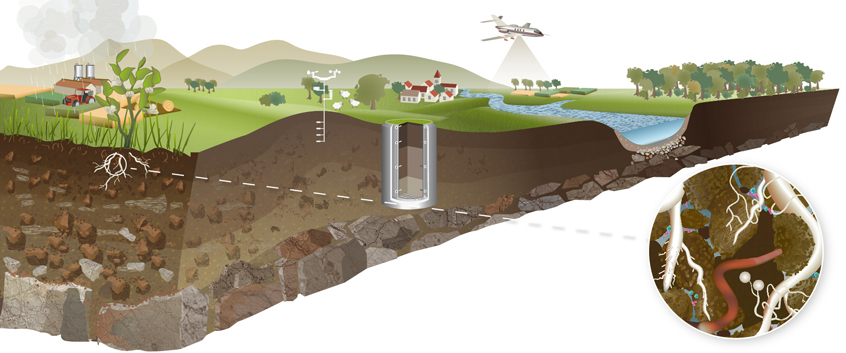
Department of Soil System Science
Soil is a key component in our terrestrial environment and plays a crucial part in the water, carbon and nutrient cycles and in the mobility of pollutants. As a filter for clean groundwater and as a habitat for an enormous variety of organisms, it also fulfils a number of indispensable functions for agricultural production. How do the interactions of physical, chemical and biological processes contribute to these functions? And what effect do the demands we make of soils have on these functions?
It is essential for the sustainable and optimised use of our soils that an answer to these questions is found. Around the world, development and degradation are reducing the surface area of fertile ground while the demands that a growing global population makes on soil as a resource is increasing. It is important that soil is seen as a complex system. This means firstly that we need to understand the fundamental processes in this materially heterogeneous and porous medium. It also means that we must explain how the whole system (including its stability in the face of disturbance through use or climate change) functions in the interplay of all these processes.
In the Department of Soil System Science, we investigate the transport of water, gases and material in soils, the turnover of organic substances and the interaction between soil and vegetation as part of the whole system. We couple experimental work closely with the development of model concepts. One focus is on the structure of soils – pore networks, aggregates and the soil profile. This structure affects all the physical and biological processes and is itself a product of these processes. X-ray tomography and image analysis are used for structural analysis. We use different lysimeter designs to link laboratory and field experiments.
On a landscape scale, the interaction between the geographical distribution of functionally different soils and the flow of water is crucial for the way in which substances are transported between neighbouring compartments – that is, the atmosphere, soil and groundwater. In cooperation with other departments, we combine different methods, ranging from geophysics and remote sensing to site assessments and a concept for "soil-landscape modelling" and thus make an important contribution to the modelling of terrestrial systems.
The sustainable use of our soils is also the objective of the BonaRes (soils as natural resources for the bioeconomy) programme run by the BMBF – the Federal Ministry of Education and Research – which is coordinated by the UFZ's Department of Soil System Science.
